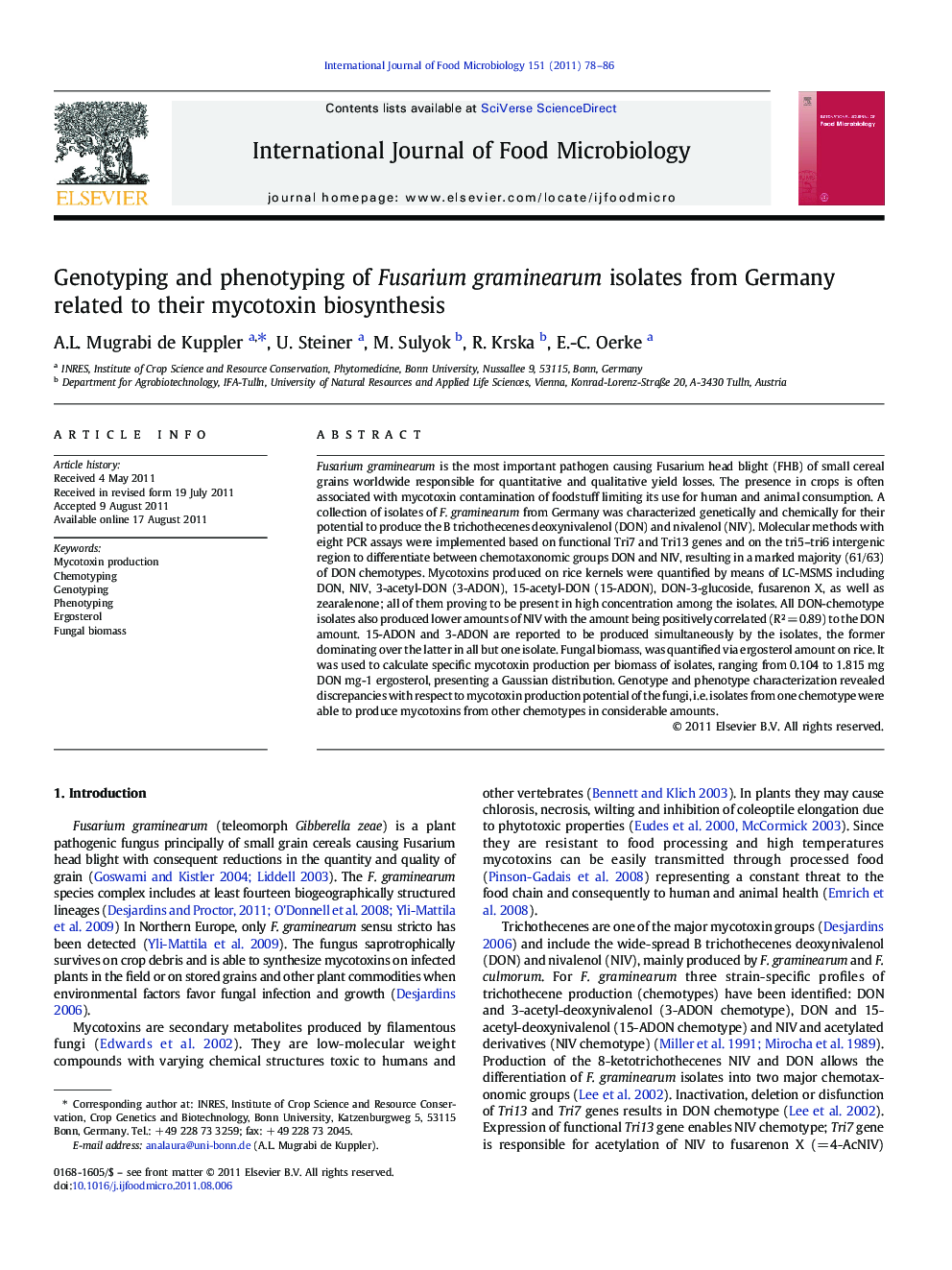| Article ID | Journal | Published Year | Pages | File Type |
|---|---|---|---|---|
| 4367966 | International Journal of Food Microbiology | 2011 | 9 Pages |
Fusarium graminearum is the most important pathogen causing Fusarium head blight (FHB) of small cereal grains worldwide responsible for quantitative and qualitative yield losses. The presence in crops is often associated with mycotoxin contamination of foodstuff limiting its use for human and animal consumption. A collection of isolates of F. graminearum from Germany was characterized genetically and chemically for their potential to produce the B trichothecenes deoxynivalenol (DON) and nivalenol (NIV). Molecular methods with eight PCR assays were implemented based on functional Tri7 and Tri13 genes and on the tri5–tri6 intergenic region to differentiate between chemotaxonomic groups DON and NIV, resulting in a marked majority (61/63) of DON chemotypes. Mycotoxins produced on rice kernels were quantified by means of LC-MSMS including DON, NIV, 3-acetyl-DON (3-ADON), 15-acetyl-DON (15-ADON), DON-3-glucoside, fusarenon X, as well as zearalenone; all of them proving to be present in high concentration among the isolates. All DON-chemotype isolates also produced lower amounts of NIV with the amount being positively correlated (R² = 0.89) to the DON amount. 15-ADON and 3-ADON are reported to be produced simultaneously by the isolates, the former dominating over the latter in all but one isolate. Fungal biomass, was quantified via ergosterol amount on rice. It was used to calculate specific mycotoxin production per biomass of isolates, ranging from 0.104 to 1.815 mg DON mg-1 ergosterol, presenting a Gaussian distribution. Genotype and phenotype characterization revealed discrepancies with respect to mycotoxin production potential of the fungi, i.e. isolates from one chemotype were able to produce mycotoxins from other chemotypes in considerable amounts.
► Molecular and biochemical screening of German Fusarium graminearum isolates. ► Discrepancies: one chemotype produced mycotoxins from other chemotype in high amount. ► High concentration of mycotoxins and derivatives in in situ contaminated rice kernels. ► 15-ADON prevailed over 3-ADON and was simultaneously produced by the isolates. ► Specific mycotoxin production followed a Gaussian distribution.
